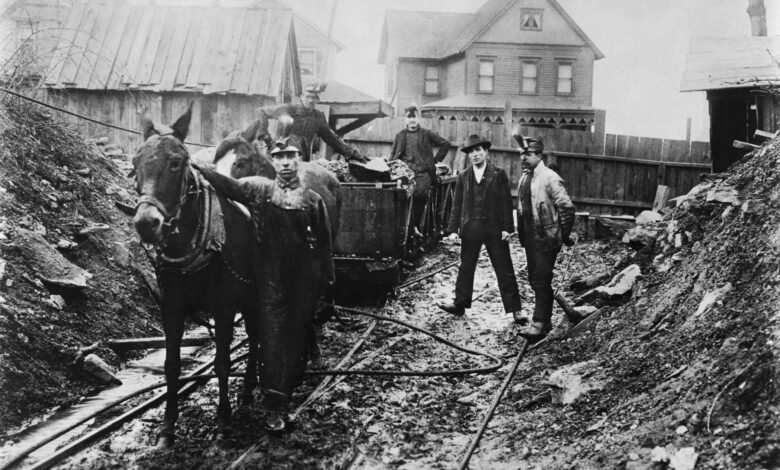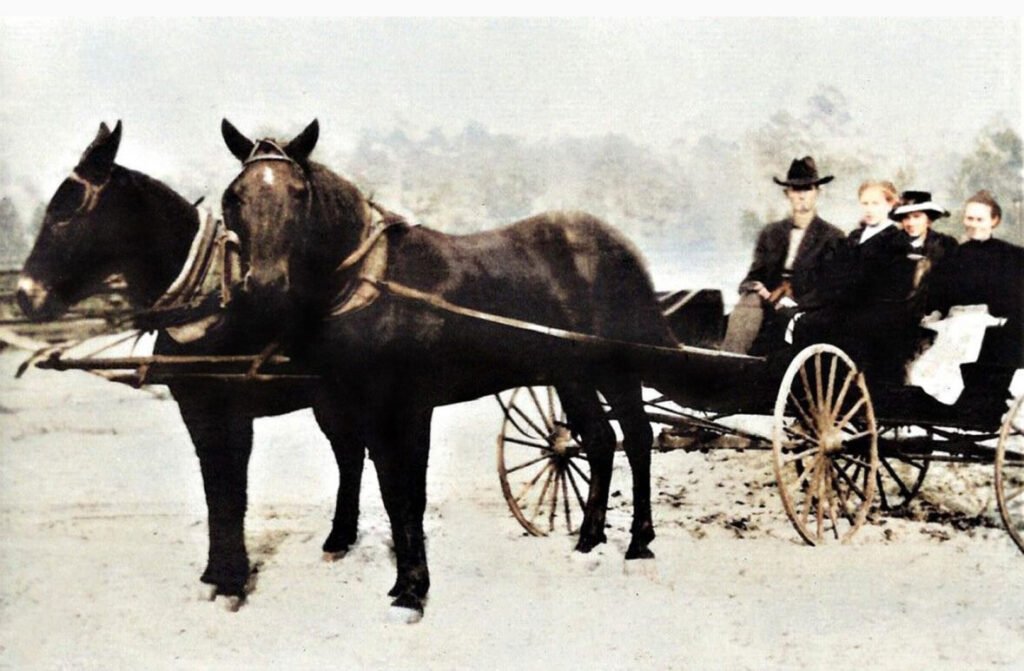Exploring the Legacy of Crazy Horse and His Kin NYT: A Story Told

Crazy Horse and Kin NYT takes us into the world of a legendary Native American warrior, Crazy Horse, and the people who were close to him. The New York Times (NYT) has covered his story in many ways, helping us understand his importance and the legacy of his people. Crazy Horse was not only a brave leader but also a symbol of strength, resistance, and pride for his tribe, the Lakota Sioux.
In this post, we’ll dive deeper into what Crazy Horse and his kin represent in history. We’ll explore how the NYT has reported on his life and his family, providing a look at both their struggles and triumphs. This story is one of courage and heritage, and it’s important to understand how the past shapes the present.
Who Was Crazy Horse? Unveiling the Man Behind the Legend
Crazy Horse is one of the most iconic figures in Native American history. Born in 1840, he was a respected leader of the Lakota Sioux tribe. Crazy Horse is best known for his role in the Battle of Little Bighorn in 1876, where he fought against General Custer’s troops. His initiative and dauntlessness made him a legend to his kin. He was a man of few words but great strength, a warrior who stood firm in protecting his tribe and their way of life.
The New York Times (NYT) has explored Crazy Horse’s life in many different articles. These stories have helped to shed light on his quiet yet powerful role in history. Through NYT‘s coverage, we learn that Crazy Horse was more than just a warrior—he was a symbol of resistance and strength against the challenges that his people faced from colonization. Understanding the life of Crazy Horse is important to grasp the broader story of Native American resilience.
Crazy Horse’s Early Life
- Born in 1840, Crazy Horse grew up in the vast plains of South Dakota.
- He was known for his skill as a horseman and his courage in battle.
- He was named “Crazy Horse” after a vision, showing his deep connection to spirituality.
Crazy Horse’s story has been written about in NYT articles because of his importance to American history. These reports explore his early life, his challenges, and his ultimate role in defending his people’s land. It’s easy to see why his life still resonates with people today.
Crazy Horse and Kin NYT: A Historical Journey Through Articles
The New York Times has covered the history of Crazy Horse and his family, offering readers an in-depth look into their lives. This coverage spans across many years and highlights both the triumphs and struggles of Crazy Horse’s descendants. His kin played an important role in continuing his legacy and fighting for the rights of Native Americans.
The articles by NYT emphasize how Crazy Horse’s family struggled with the changes brought by settlers. His people faced land loss, forced relocation, and the destruction of their way of life. Despite these hardships, his kin continued to fight for justice and preserve their culture. The newspaper provides a detailed account of how Crazy Horse’s legacy lived on in the actions of his family members.
Important Moments in the History of Crazy Horse’s Kin
- Crazy Horse’s descendants played a role in keeping the Lakota Sioux traditions alive.
- They also advocated for Native American rights in the 20th century.
- The NYT has shown how Crazy Horse’s family worked to protect sacred lands.
Through these NYT articles, readers get a unique insight into the lives of Crazy Horse’s kin. The reports cover various events in Native American history, including legal battles for land rights and the preservation of cultural heritage.
The Role of Crazy Horse’s Kin: How His Family Shaped History
Crazy Horse’s family did more than just remember his legacy—they shaped history through their actions. After his death, his family continued to fight for Native American rights, facing oppression while striving to keep their culture intact. The NYT has documented these struggles, focusing on how Crazy Horse’s kin were involved in important movements and legal battles.
The role of Crazy Horse’s kin cannot be overlooked. They took his teachings of resilience and courage and used them to protect their people. Many of his descendants played vital roles in the American Indian Movement (AIM), which was instrumental in securing rights for Native Americans during the 20th century. Through interviews and articles, NYT tells the story of how Crazy Horse’s family persisted in their fight for justice.
How Crazy Horse’s Kin Continued the Fight for Justice
- His descendants worked with organizations that fought for Native American rights.
- They helped bring attention to the injustices that Native Americans were facing.
- NYT has documented these efforts in detailed reports and interviews.
Crazy Horse’s kin’s journey was not an easy one, but they carried on his legacy with pride. The NYT continues to cover their ongoing struggles and accomplishments, which inspire many people today.
Crazy Horse and Kin: Lessons from the NYT’s Coverage
By reading NYT‘s extensive coverage of Crazy Horse and his kin, readers can learn valuable lessons. One of the most important lessons is the power of standing up for one’s beliefs. Crazy Horse’s life teaches us about bravery and the importance of protecting what matters, whether it’s one’s family, culture, or land. His family carried these values forward, despite the many challenges they faced.
The stories told by NYT also help us understand the larger picture of Native American history and its struggles. The coverage shines a light on how Native Americans fought against overwhelming odds, yet never gave up on their identity. It’s a reminder that perseverance and courage are key to overcoming difficulties in life.
Key Takeaways from Crazy Horse’s Story
- Courage and resilience are essential qualities that we can all learn from.
- Crazy Horse and his kin fought to preserve their culture, showing the importance of heritage.
- The NYT articles remind us to never forget the stories of those who fought for justice.
Through the lessons found in these NYT articles, readers can gain a deeper understanding of what it means to stand up for one’s rights and culture. These stories not only honor Crazy Horse but also serve as a guide for future generations.
Understanding the Struggles of Crazy Horse’s Family Through NYT Reports
Crazy Horse’s family didn’t only experience victories—they also faced many hardships. After Crazy Horse’s death, his family had to live through difficult times, including the loss of their land and cultural heritage. The New York Times has shared the struggles of his family in great detail, showing how they fought against injustice while trying to keep their identity intact.
The articles in NYT highlight the pain of forced relocation and broken treaties, but they also showcase the resilience of Crazy Horse’s kin. These reports give us a better understanding of how the battle for Native American rights has been ongoing for many years. The stories of Crazy Horse’s descendants are not just about the past—they’re a crucial part of the fight for equality today.
Challenges Faced by Crazy Horse’s Kin
- Loss of land and forced relocation by the U.S. government.
- Legal battles to regain rights and protect sacred lands.
- Eradication of culture and endeavors to keep up with customs.
These stories in the NYT show us how Crazy Horse’s kin turned their struggles into strength. The reports remind us that the fight for Native American rights is far from over and that learning from the past is key to shaping a better future.
The Legacy of Crazy Horse and Kin: A Glimpse at Native American Heritage
Crazy Horse’s legacy is much more than his personal accomplishments. It’s about the impact he had on his people and the way his family continued his fight. The NYT highlights this legacy through stories that connect the past with the present. His descendants continue to advocate for Native American rights and work to keep their culture alive.
The articles also show how Crazy Horse’s family is an essential part of Native American heritage. By preserving their traditions and standing up for their rights, they have ensured that the story of Crazy Horse is not forgotten. The legacy of Crazy Horse and his kin is one of perseverance, pride, and courage.
How Crazy Horse’s Legacy is Remembered Today
- Crazy Horse’s name lives on in many Native American communities.
- His descendants work to preserve his story and their culture.
- NYT provides an ongoing look at how his legacy is kept alive.
Crazy Horse’s legacy is more than a part of history—it is still relevant today. Through NYT‘s coverage, we can continue to learn about his life, his kin, and the powerful story of the Lakota Sioux.
Conclusion
Crazy Horse and his kin have left an indelible mark on Native American history. Through their actions, bravery, and dedication to their people, they shaped the course of history. The New York Times has helped preserve and share their story, ensuring that future generations understand the struggles and victories of Crazy Horse’s family. Their resilience teaches us important lessons about courage, perseverance, and the importance of culture.
By learning about Crazy Horse and his kin, we can better understand the history of Native Americans and their fight for justice. Their story is not just about the past—it’s a reminder of the ongoing journey to preserve cultural heritage and stand up for what’s right.
FAQs
Q: Who was Crazy Horse?
A: Crazy Horse was a leader of the Lakota Sioux and a hero known for his bravery and strength in battle, particularly at the Battle of Little Bighorn.
Q: What is Crazy Horse’s legacy?
A: His legacy is one of courage, resistance, and leadership in defending Native American culture and land.
Q: How did Crazy Horse’s kin continue his fight?
A: Crazy Horse’s descendants fought for Native American rights and worked to preserve their culture and heritage.
Q: What does NYT say about Crazy Horse?
A: The NYT has written extensively about Crazy Horse’s life, his legacy, and his family’s continued fight for justice.
Q: Why is Crazy Horse’s story important today?
A: Crazy Horse’s story is a reminder of the ongoing fight for Native American rights and the importance of preserving cultural identity.
Q: How did Crazy Horse impact Native American culture?
A: Crazy Horse became a symbol of resistance and bravery, and his legacy continues to inspire Native American communities today.

